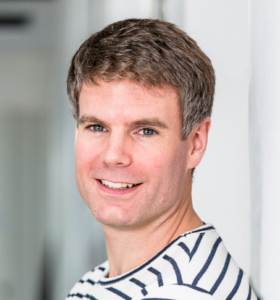Biography
Lacking an academic background, and initially unsure of what I was interested in, I studied a very broad Medical Sciences undergraduate degree in Leeds. I quickly realised I wanted to understand systems in great detail, and thus specialised in biochemistry. Upon graduation I moved to Cambridge to work as a research assistant in the MRC-LMB in the lab of Venki Ramakrishnan.
Working in the Ramakrishnan lab sparked my interest in structural biology, and after two years moved to pursue a PhD with Elena Conti. I was initially at the EMBL in Heidelberg, and later moved with Elena to the Max Planck in Martinsried. My PhD work revealed some unique structural features of an RNA helicase, and how this might contribute to its function with other cofactors and the RNA exosome.
I continued within the Max Planck Society as a Postdoc, moving to the group of Andrea Mussacchio at the MPI of Molecular Physiology in Dortmund. In Andrea’s lab I helped to unravel the biochemical puzzle of protein organisation within the kinetochore. Kinetochores are vast protein assemblies, built on chromosomes, that ensure that each chromosome is properly segregated during both mitosis (“normal” cell division) and meiosis; the generation of haploid germ cells for sexual reproduction. In my independent research group I now study the biochemical mechanisms of meiosis at the Friedrich Miescher Laboratory in Tübingen.
Education and positions held
- 2017-Present:
- MPRGL Friedrich Miescher Laboratory, Tübingen
- 2011-2017:
- Postdoc, MPI Molecular Physiology Dortmund
- 2006-2011:
- PhD Student EMBL Heidelberg & MPI Biochemistry, Martinsried, Germany
- 2004-2006:
- Research Assistant, MRC-LMB, Cambridge UK
- 2001-2004:
- BSc Medical Science, Leeds UK
Research Summary
Meiosis is at the very heart of both eukaryotic diversity and our very own genetic individuality. During meiosis, the parental genome needs to be reduced in order that the next generation receives the correct number of chromosomes. In order to achieve this task, the homologous chromosomes in the parental genome need to be linked and then segregated. We study how these meiotic chromosome linkages occur, and how they are regulated. Both complex mammals, and the simple unicellular yeast, use the same basic mechanisms to ensure that meiosis takes place properly. In order to link homologous chromosomes the cell introduces programmed double strand DNA breaks in its own genome.
These breaks are then repaired, using the homologous chromosome as a DNA repair template. Modifications to the normal DNA repair mechanisms lead to these DNA repair events to physically connect homologous chromosomes to one another. We are interested in understanding the regulation of meiotic DNA break formation, in number space and time. We are also interested in understanding how these breaks become crossovers through the activity of DNA helicases. Due to the difficulty in studying these processes in the cell directly, we try to rebuild these systems outside of the cell, using recombinant proteins and synthetic chromatin.
Key publications
- Altmannova V, Blaha A, Astrinidis S, Reichle H, Weir JR. InteBac: An integrated bacterial and baculovirus expression vector suite. Protein Sci. 2021 Jan;30(1):108-114. doi: 10.1002/pro.3957. Epub 2020 Oct 13. PMID: 32955754; PMCID: PMC7737779.
- Weir JR*, Faesen AC*, Klare K*, Petrovic A, Basilico F, Fischböck J, Pentakota S, Keller J, Pesenti ME, Pan D, Vogt D, Wohlgemuth S, Herzog F, Musacchio A. Insights from biochemical reconstitution into the architecture of human kinetochores. Nature. 2016 Sep 8;537(7619):249-253. doi: 10.1038/nature19333. Epub 2016 Aug 31. PMID: 27580032.
- Klare K*, Weir JR*, Basilico F, Zimniak T, Massimiliano L, Ludwigs N, Herzog F, Musacchio A. CENP-C is a blueprint for constitutive centromere-associated network assembly within human kinetochores. J Cell Biol. 2015 Jul 6;210(1):11-22. doi: 10.1083/jcb.201412028. Epub 2015 Jun 29. PMID: 26124289; PMCID: PMC4494010.
- Falk S*, Weir JR*, Hentschel J, Reichelt P, Bonneau F, Conti E. The molecular architecture of the TRAMP complex reveals the organization and interplay of its two catalytic activities. Mol Cell. 2014 Sep 18;55(6):856-867. doi: 10.1016/j.molcel.2014.07.020. Epub 2014 Aug 28. PMID: 25175027.
- Weir JR, Bonneau F, Hentschel J, Conti E. Structural analysis reveals the characteristic features of Mtr4, a DExH helicase involved in nuclear RNA processing and surveillance. Proc Natl Acad Sci U S A. 2010 Jul 6;107(27):12139-44. doi: 10.1073/pnas.1004953107. Epub 2010 Jun 21. PMID: 20566885; PMCID: PMC2901443.

